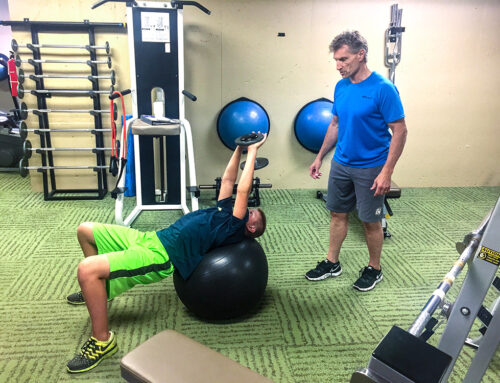Free Weights vs Machines
There are many debates about which lifting modality, free weights or machines, is more beneficial and to why. Most weight lifters have the same goal in mind; to be become stronger, so it is very important that they are using the best modality possible to do so. So we ask the question; which of the two resistance training modalities provide the greatest improvements in strength? There are many different pros and cons to each of the two, but we want to find out which one provides the largest improvements in direct muscular strength.
Exercise machines were created to make weight lifting easier and safer. The biggest benefit to machines is that they are user friendly and are great for beginners because experience is not necessary. It is easier to lift more weight with machines because they stabilize the weight, so all that is needed is the force to move the weight. Machines allow movement in only one plane, which makes it difficult to use accessory muscles or incorrect technique during the execution of a lift or a push.
Beside the movement plane the most important difference between machines and free weights is the use of stabilizer muscles. Free weights still are the most frequently used item in the gym in regards to strength training. There are a greater number of stabilizer muscles that are used during multi-joint exercises done with free weights. The fact that machines use less stabilizer muscles is also a benefit, because it helps you focus more on the targeted muscle. Free weights can more readily train large muscle masses and synergistic muscles, while machines can target a specific muscle more significantly. Free weights require more experience since precise balance and motor control is needed and machines only move in one plain, which is great for novice lifters.
Machines have a stable base and movement pattern because they restrict you to one line of training force. One study from Illinois State University reported that when subjects performed free-weight bench presses, they used more front- and middle-deltoid muscles than during machine bench presses. The researchers reasoned that this is likely due to the need for the deltoid muscles to stabilize the shoulder joints to balance the bar when pressing a barbell. Because the machine is on a fixed path, the shoulders don’t need to stabilize the shoulder joints. Less involvement from the deltoids means you can place focus more on the chest for greater muscle growth .
Free weights tend to be more popular with more experienced lifters but with a proper spotter anyone can use them. They provide a greater range of movement than machines and also a wider variety of exercises. This not only allows the body to move in 3 different planes but to also target more than one muscle at once, especially opposing muscles. Free weights offer ways to continually use muscles differently. Some lifters like the greater freedom, flexibility and efficacy that free weights provide. Free weights force you to use more stabilizer muscles to balance the weight. Research has shown that because stabilizer muscles are being used free weight exercises cause you to burn more calories (about 50% more than machines). This can help you to build more overall strength, because the stabilizer muscles are crucial for major muscles groups to produce the most force.
Free weight is constant: It is not influenced by external cables, pulleys, and levers. Different velocities, forces, and powers suggest that the force-velocity relationship for the machines may be different when compared with free weights. From some of the other studies that were done comparing the modalities it seems that the consensus on most, but not all, of the research was that both types of resistance training are equally beneficial in regards to strength gains. In one research study done by Valdosta State University the researchers found that when subjects trained on a free-weight bench press or a machine bench press for 10 weeks, both groups increased their strength by about 10% on the free-weight bench press.
The basis for the development of machine resistance equipment is to integrate novice lifters to build a solid base of to increase safety when training alone. The “Machines definitely have evolved since their beginning in the 1970s and deserve a place in any gym. For individuals new to working out, these devices can be safer than using free weights, especially if the person is training without supervision” of a trainer or training partner (Free weights and Machines.. 2008). The goal of machine resistance is to create a sense of safety for any level of lifters; advanced lifters may not benefit as much from this form of strength exercise due to their enhanced ability to lift greater amounts of free weights. The machine resistance training can solely add a finishing workout variety to stress the muscles at the end of the work that was done with free weights. When lifters reach near exhaustion and fatigue of the muscles trained; machines can come in handy when volumizing the muscle with lighter weighted resistance on a singular plane of contraction.
The major conventional compound movements of free weights include back squats, deadlifts, bench press, clean and jerks, shoulder press, bent over row, etc. These movements will not only improve muscular strength, generate muscular flexibility, and exciting greater amounts of muscle fibers allowing the subject to engage their “core” muscles for stabilization. The mixed combination to machine resistance work and free weight training have their benefits, and together they can create and ultimate work capacity of strain on the targeted muscles.
Conclusion: While there are many pros and cons to each modality of resistance training it seems that most advice is to use both in order to see the best strength gains.
Esteem Fitness is located in Norton Shores serving Muskegon, Grand Haven, and all of West Michigan!





